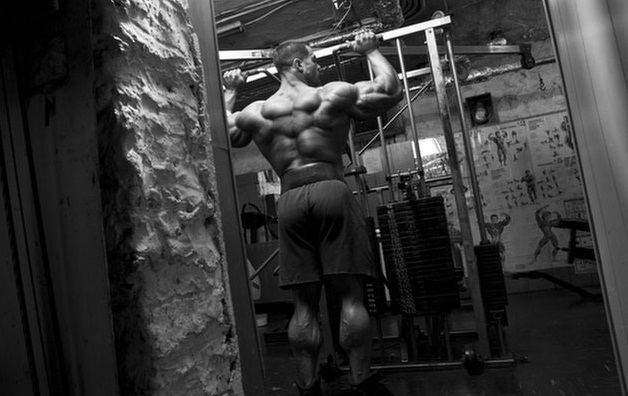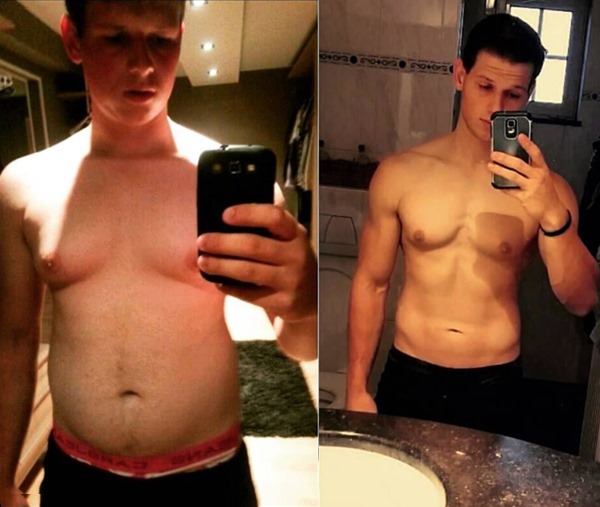In today’s bodybuilding culture, extremes have become the norm. It seems every so called guru is coming up with a new extreme diet, supplementation, or extreme workout.

It seems everyone is trying to sell you some workout routine with a magic set and rep scheme. Some claim that you should only lift low reps because that is where the most overload occurs and where most strength gains are made.
Rep Schemes
Other routines claim that anything under 10 reps is a waist of time. Some even recommend repetition schemes as high as 100!!!! So what’s the dealio? Well, my mama always told me “moderation in everything” and by god she was right! There is no magic rep scheme. ALL rep schemes have merit and all should be utilized in order to achieve maximal physique development.

Let me explain how every rep scheme has its merit.
Low Reps:
Typically defined as anywhere from 1-5 reps, low reps place the most load on the muscles as you are able to handle the heaviest weights in this rep range. Other than placing a large load on the muscles, this rep scheme also has the advantage of activating ALL fiber types including the slow twitch fibers! Now I’m sure you are thinking “wait a second, I’ve always been told you had to do high reps to activate slow twitch fibers.”
WRONG!
Muscle fibers are recruited in order from:
Slow –> Intermediate –> Fast
So if you are lifting a very heavy load, your muscles will recruit all the slow fibers first, if the tension they create is not sufficient to support the load, the intermediate fibers are then recruited, and if they can’t cut it, the fast twitch are recruited. So you can plainly see if you are lifting heavy loads you are maximally stimulating slow twitch fibers. Lower rep schemes & heavy loads also cause the stimulation of myofibrillar (the actual proteins that are responsible for contraction) protein synthesis better than any other rep scheme.
Furthermore, lifting in this rep range will yield great strength gains, which will enable you to use more weight in other rep ranges, thus overloading the muscle even further & causing greater hypertrophy.
Moderate Reps:
 Typically defined as 6-12 reps, moderate rep schemes are sort of the jack of all trades, master of none. They have many of the benefits of the high rep schemes and many benefits of the low rep schemes. In peer review studies, it is this rep range that seems to consistently cause the most overall hypertrophy. This is probably because the rep range is low enough to allow use of heavy loads, but enough reps are performed that the muscle is under tension for a longer period of time under the load than it would be in the low rep range.
Typically defined as 6-12 reps, moderate rep schemes are sort of the jack of all trades, master of none. They have many of the benefits of the high rep schemes and many benefits of the low rep schemes. In peer review studies, it is this rep range that seems to consistently cause the most overall hypertrophy. This is probably because the rep range is low enough to allow use of heavy loads, but enough reps are performed that the muscle is under tension for a longer period of time under the load than it would be in the low rep range.
This should then result in the greater hypertrophic response.
High Reps:
Typically defined as anything around or above 15 reps. Now I know you are probably thinking “If low reps stimulate all the fibers, result in the best strength gains, and moderate reps result in the most hypertrophy, why in the world would I do high reps?” Well high reps still have their merits. High repetitions cause massive glycogen depletion during the workout. The body will compensate for this in the post workout period by increasing the amount of glycogen the muscle stores. Since glycogen is very hydrophilic, this extra glycogen will pull even more water into the cell (about 2.7g water/gram of glycogen). This increase in intracellular water is very anabolic as increased cell hydration induces increases in protein synthesis and also causes the cell to stretch.
Muscle cell stretching is one of the signals for cellular growth and if the stretch is forceful enough can induce the release of growth factors.
Integrating This Into Your Routine
All this information is well and good, but I’m sure you are wondering “how the hell to I integrate it into my routine?” Let’s just use a chest workout as an example.

Starting Strength Sets:
I would start off the chest routine with a compound movement for low reps with heavy weights. Starting off in the low rep range will allow you to lift your heaviest possible weights since you are fresh and not fatigued. You would not want to perform sets with heavy weights & low reps at the end of a workout as you wouldn’t be able to move near as much weight. Some form of dumbbell or barbell press for 3-5 sets of 3-5 reps would be great for stimulating strength gains and overloading the muscle.
Rest periods should last however long you need for your body to recover and for you to feel 100% mentally focused for the next set. The focus should be on moving as much weight as possible.
Middle Sets:
 After the strength sets are done, I would perform another 3-5 sets of a different pressing movement aiming for a load that allows you to perform 6-12 reps. Make sure you hit the lower & higher ends of this rep range don’t just do 3-5 sets of 6 reps. What you might try is doing around 6 reps on your first set, then reducing weight to perform 8 reps on your next set, then 10 reps on your next set, and 12 reps on your final set. Performing the sets in this manner will allow you to reap all the benefits of this rep range.
After the strength sets are done, I would perform another 3-5 sets of a different pressing movement aiming for a load that allows you to perform 6-12 reps. Make sure you hit the lower & higher ends of this rep range don’t just do 3-5 sets of 6 reps. What you might try is doing around 6 reps on your first set, then reducing weight to perform 8 reps on your next set, then 10 reps on your next set, and 12 reps on your final set. Performing the sets in this manner will allow you to reap all the benefits of this rep range.
Since you are already fatigued from the previous pressing exercise, you might try using a pressing movement that requires less stabilization & balance so you can focus on moving the weights, something like a hammer strength press would be ideal here. Rest periods during these sets should be around 2-3 minutes.
Isolation Sets:
To finish off your workout I would suggest an isolation exercise for 2-3 sets of high reps (15+ reps). Using an isolation exercise will ensure that your chest fatigues rather than your shoulders or triceps failing before your chest which may occur during a pressing movement. Cable crossovers, dumbbell flyes, cable flyes, or a pec deck fly movement would be optimal for this exercise.
Rest periods should be 60-90 seconds MAX! Go for the pump and burn it out! The doorway is open for you… now go get yo’ swole on!
Author: Layne Norton










